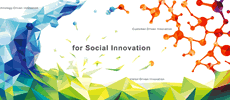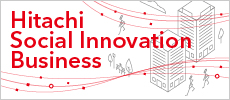Hokkaido University × Hitachi Hokkaido University Laboratory Fifth Forum 2025Building a Future for the RegionHints for Understanding and Resolving Complexity and Diversity of Regional Challenges
Highlight
The Japanese government has put forward the Regional Revitalization 2.0 plan at the heart of its growth strategy with the goal of combining digital technology and regional revitalization to achieve economic growth and ameliorate Japan’s overconcentration of people in Tokyo. The Hokkaido University × Hitachi Hokkaido University Laboratory Fifth Forum 2025 held in March 2025 sought to address the complexity and diversity of regional challenges that encompass a multitude of factors, including both institutions and culture, and to seek hints for how to resolve them. The program provided an opportunity for those on the front line of grappling with these challenges to present the work they are doing and to discuss the importance of primary information sources and the insights they offer.
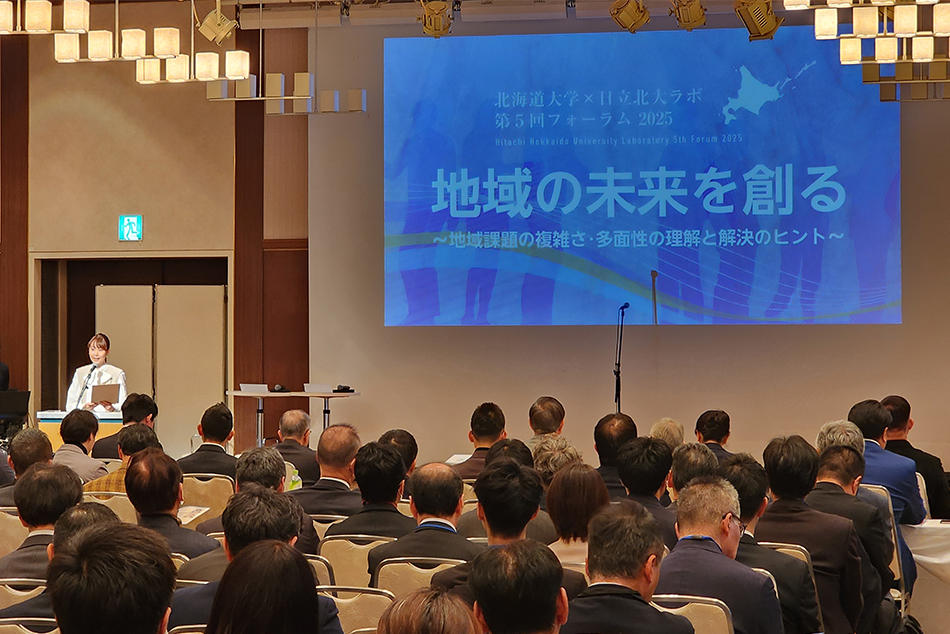
Opening Address
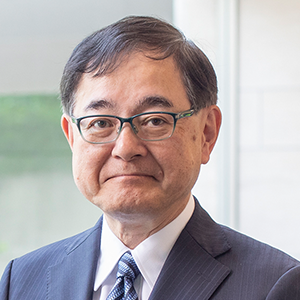 Kiyohiro Houkin
Kiyohiro Houkin
President, Hokkaido University
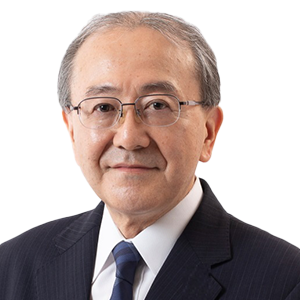 Yutaka Fujii
Yutaka Fujii
Chairman, Hokkaido Economic Federation
The Hitachi Hokkaido University Laboratory was established in 2016 as a hub for open innovation between Hokkaido University and Hitachi. With the goals of creating sustainable regional communities and resolving societal challenges that include depopulation accompanied by aging demographics and a low birthrate, the laboratory is working on symbiotic urban development in which virtuous circles are established in health, industry, and energy through collaborative creation with partners.
It is against this background that the fifth open forum was held on the main topic of “Building a Future for the Region.” Hokkaido University President Kiyohiro Houkin opened the forum and made the following comments. “Over the nine or so years since the laboratory was established, Hokkaido University and Hitachi have been working together to address issues that relate specifically to Hokkaido. Internationally, the concepts of diversity, equity, and inclusion (DEI) are currently facing a strong backlash. Nevertheless, if we are to resolve complex and multi-faceted regional challenges, bringing together the many different stakeholders involved and engaging in dialogue will be essential. It is my hope that this forum will provide hints on how to understand the complexity and diversity of regional challenges and on how to resolve them.”
Yutaka Fujii, Chairman of the Hokkaido Economic Federation, also spoke, saying that, “While Hokkaido is recognized as being at the forefront of confronting these challenges, factors such as the war in Ukraine and recent rice shortages have heightened people’s awareness of our importance as a food producer for Japan. In addition to a resurgence in tourism with the waning of the COVID pandemic, Hokkaido has also been identified as a suitable site for advanced semiconductor manufacturing. These represent great opportunities for the revitalization of Hokkaido’s economy and industry. Through this forum, I hope we can share our thinking on regional challenges and on what we can do to overcome them.”
Keynote Presentation
Turning a Soccer Stadium into a Cooperative Community
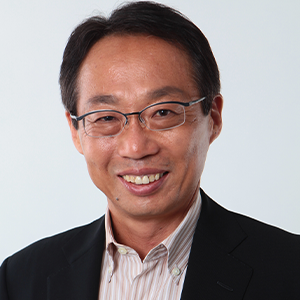 Takeshi Okada
Takeshi Okada
Chairman of Imabari Yume. Sports Inc.
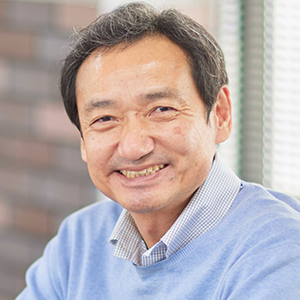 [Interviewer]
[Interviewer]
Rihito Yamamoto
Head of Iwamizawa Campus, Iwamizawa School, Hokkaido University of Education
YamamotoThe topic of this forum is “Building a Future for the Region.” For the keynote presentation, we have invited Takeshi Okada, a former manager of the Japanese national football team and currently the chairman of Imabari Yume. Sports Inc. and owner of Football Club (FC) Imabari, a professional football club based in Imabari City, Ehime Prefecture. Okada-san, could you please tell us what you hoped to accomplish in the Imabari region by leveraging the resources offered by soccer culture, including the story of how you came to the region as an outsider.
OkadaIt is now a decade since I came to Imabari. Initially, to enable the players representing Japan to succeed on the world stage, my only concern was how I could foster athletes who are able to think for themselves and play with initiative. At that time, a Spanish coach told me they have a soccer system in Spain that they teach to players up to age 16, after which the players are free to play as they please. This is the exact opposite of Japanese football, where the teaching of tactics starts from high-school age. That started me thinking that we, too, should set up a club like that. I went to see a former teammate who now ran a company in Imabari that had an amateur team in the Shikoku League. When I told him what I wanted to do, he urged me to go ahead with it, but said that we first needed to acquire 51% of the company’s shares. This is how I ended up as an owner despite not having any money (laughs). When I started out as a company manager, I chose a corporate mission of “helping to create a society for the next generation in which people value spiritual over material wealth.” This was because, given that the finite nature of the world we live in makes a scramble for resources inevitable as we all seek to grow, I believe it is vital that we pursue a path whereby a good life is attained not through physical growth that can be measured with numbers, but rather through cultural growth that cannot be expressed numerically.
There was a time early on when nothing seemed to work, no matter what I tried. I had to endure some painful words about how I did not understand how things were done at Imabari. Then, at some point, I had a realization. Even though there were six of us working together, not one of us had any friends in Imabari City. Before we could go about asking people to come and watch soccer, we needed to go and see Imabari for ourselves. Since then, we have made an effort to become part of the community. We have honestly tried everything, including setting a goal of making some friends and telling elderly people to let us know if anything was bothering them. Since then, the people who we came into contact with by doing these things have slowly started coming along to watch soccer.
YamamotoIt seems to me that all the different things you have done yourself have been a big part of this. Nevertheless, did you face some difficulties in trying to generate cash and keeping the business running while building trust at the same time?
OkadaWhile our corporate mission highlights the importance of those forms of capital that are intangible, obviously capital in its tangible form is also essential if you want to put food on the table. We need to work in practical ways if we are to fulfill our corporate mission. This is why I am very strict about business. If we get into the red, I get people thinking about what we can do to return to profitability. Instead of assuming that wet weather inevitably means fewer spectators, it is vital that you avoid taking things for granted and instead ask yourself why rain should be a problem. Is there any way you can get people to come even when it is wet?
YamamotoRather than just having a mission, it is clearly important that you establish an actual business model. What is it that you see as important when it comes to managing an organization, whether it be a company or a soccer team?
OkadaWe live at a time when capitalism has gotten bogged down, populism is rising on the back of disparities and partisanship, the rise of artificial intelligence (AI) is making it hard to know what is true anymore, and where we lack role models. Having no precedents for this state of affairs, we have no choice but to make up our own minds about everything. But if we do that, half of what we decide will turn out wrong. It is a time of “error and learn.” As such, the only hope left to us, I believe, is to build cooperative communities. Rather than learning ways not to fail, this means using failure as an opportunity to learn. We need to pool our capabilities, bringing together people who are able to act on their own initiative. If everyone does the same thing, a single obstacle can bring us all down. Instead, we need to build organizations in which a wide variety of people acknowledge one another. What matters most in this is to be accepting of the other people involved. You cannot expect everyone in a team of 20 to 30 people to all be on close terms with one another at the same time. However, it is vital that they acknowledge one another based on the common goal of winning the game, and that they adopt an attitude of, “While I may not get along with that person, I know that passing to them will result in a score.”
YamamotoWhile having everyone share a common goal is a prerequisite for an autonomous decentralized organization, I expect there will be cases where people differ in their values and judgements. Did you face difficulties like that in the process of building an organization?
OkadaWe had all sorts of failures (laughs). That is, we would try things or say things, then abandon them if they did not go well. People say I am quick to change my mind, but it makes sense to change quickly if you get something wrong. Leadership, or captaincy, only works if you have a selfless attitude. I believe that people rally around those who work tirelessly toward a vision or goal and take risks in pursuit of a challenge, and that this gets the organization moving in a common direction.
YamamotoRegarding what makes a leader, I expect it differs somewhat depending on the nature of the organization. Could you say a little more about what being a leader in the future will involve and about the training of leadership?
OkadaIt is by overcoming difficulties and pressure that people grow. Whereas people working for companies in Europe and America have the pressure of potentially losing their job, applying such pressure is difficult in Japan where dismissal is not a simple matter. As such, the only option is to get people to feel that way for themselves and light a fire in their hearts. Offer a hand to someone asking for help and they will fall back down again the moment you let go. If on the other hand you leave them to their own devices, about half of them will struggle desperately to clamber back up. People will never grow if they lack the desire to do so. I am also principal of FC Imabari High School and I tell our coaches (teachers) that there are three questions to ask when providing guidance to pupils. When something happens, the first question to ask the pupil is, “What is going on?” In doing so, however, the coach must not express his or her own opinion. Instead ask, “Well then, what do you want to do?” Only after this can the coach ask, “How can I help?” It is by going through this questioning process that pupils develop initiative. An open school for third-year junior high school students held in July 2024 went off very successfully by leaving everything from planning to operation up to the first cohort of pupils. By undertaking all of these different activities, a change has started to take place in the town, with people who had written Imabari off as a lost cause now getting a sense that maybe the place can change. With the government also pursuing a variety of initiatives in addition to ourselves, the town’s population has stopped shrinking and more than 3,000 new residents moved in during 2023. While activities like creating employment for young people in the regions and attracting companies to locate operations there may well be very important, I have learned that what matters more than anything else is for the existing residents to live good and vibrant lives.
YamamotoThank you. Finally, could you tell me what your hopes and expectations are for the future?
OkadaAmid a multitude of conflicts and societal challenges, it feels like the world is starting to give up and enter a state of despair. Despite this, we need to keep up our hope in the next generation. One of the programs at the Furano Shizen Juku environmental education initiative I am involved in with the playwright So Kuramoto is called Chikyu no Michi (Global Pathway). The program represents the 4.6-billion-year history of Earth over a distance of 460 m, providing commentary as you walk along. Out of this 460 m, the birth of Homo sapiens only happens in the last 2 cm. There are Native Americans who talk of the world as something borrowed from our descendants. That is, rather than inheriting the Earth from our ancestors, they speak of it as being on loan from the children who will live in the future. While today’s stock prices and economics are important, it seems to me that the answers to a variety of societal challenges become clearer when we consider what to do about the times in which our as-yet-unborn children will live.
Presentation 1
Falling Population and the Unconstrained Society that Awaits
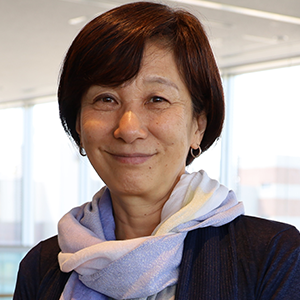 Akiko Tamakoshi
Akiko Tamakoshi
Professor, Graduate School of Medicine, Hokkaido University
Japan is seen as a nation with aging demographics and a low birthrate. Given that so many people have wanted to live a long life, however, in the sense that it represents the realization of this desire, this aging of the population is by no means a bad thing. In this regard, it is the low birthrate that represents the greater problem. When you compare birthrates by age group in 1975 with those in 2015, the proportion of women who give birth in their 20s, once the predominant childbearing years, has fallen below half. For those ages 30 and above, however, the proportion has actually increased. Looking solely at women with a spouse, the proportion giving birth has not changed for those in their 20s and has risen for older age groups. This tells us that the major impact is coming from the tendency to marry later or not at all. While a low birthrate inevitably leads to a smaller working-age cohort, which should result in fewer workers, the actual workforce has not shrunk at all. The difference is being made up by the elderly and women. Unfortunately, if you fail to create a society in which women can combine a family and a career, their only option is to choose not to marry or, if they do marry, to not bear children. In the future, it will be more important than ever to find ways for people to work efficiently despite constraints on both time and the number of workers available.
The concentration of the population in large cities is another issue. Densely concentrated populations bring higher housing prices, diminishing people’s motivation to marry and have children while also raising risks during a disaster. Moreover, when the demographics of such metropolitan areas eventually ages, it causes depopulation in the regions by creating a vicious circle in which younger people are drawn in to support them. When this happens, it drives up the cost of public infrastructure such as transportation, electricity, and water in such regions. This imbalance poses a major problem. When it comes to people’s health, meanwhile, it has been found that people who are engaged with their communities live more healthy lives and retain their faculties. How to build those connections becomes a problem, however, when the population of a community shrinks.
With the accelerating progress of science and technology, however, we now live in a time when both adults and children carry smartphones. While problems of generational disparity still exist, a wide variety of possibilities are opening up through the use of digital technology to overcome the obstacles of distance and to connect people who are physically separated from one another. If technologies such as AI help us work more efficiently, it may be that we will be able to use the time this frees up to engage more closely with other people and find more fulfilling lives for ourselves.
The question of how to enable the children who will make up future generations to enjoy spiritually enriched lives is a major challenge for our time. At Hokkaido University, we have launched a co-creation hub that brings people from different generations together for the design of systems for a sustainable and unconstrained society. The goal is to build a society in which people can live well and enjoy a vibrant way of life. As we work to unravel the diverse lifestyles and challenges found in different parts of Hokkaido, I hope that we can give more thought to what we are able to accomplish.
Presentation 2
New Initiatives for Hitachi Coming out of Hokkaido
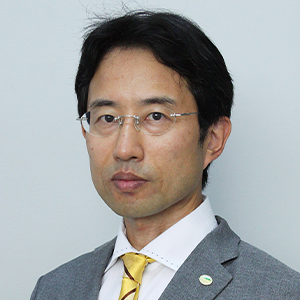 Takayuki Hashimoto
Takayuki Hashimoto
Laboratory Manager, Hitachi Hokkaido University Laboratory, Research & Development Group, Hitachi, Ltd.
Since it was opened in 2016, the Hitachi Hokkaido University Laboratory has sought to build relationships of trust with local communities and establish a platform for addressing regional challenges. Building on a collaboration with Iwamizawa City, this has involved research and development work based around the two topics of “healthcare and health” and “mathematical optimization.”
Today, I will be presenting details of some of the field trials undertaken by the Hitachi Hokkaido University Laboratory.
- Initiative for reducing the number of underweight newborns
Having verified the correlation between intestinal proteins and the diversity of intestinal flora, we have developed a simple measurement technique that can shorten testing times to one-fourth of what they used to be. This knowledge has been incorporated into an integrated platform for managing people’s health data across their life stages. By doing so, and by using this to indicate the health of pregnant women and to provide feedback on things like their nutritional condition, we have also succeeded in reducing the percentage of underweight newborns in Iwamizawa City from 10.4% to 6.3%. We are now working to reduce costs and improve the model, having entered into a four-party contract in October of last year to pursue a similar initiative. Our partners in this work include Kitahiroshima City and Hokkaido University. - Local energy initiative
A trial site for a nanogrid that facilitates the local generation and local consumption of energy has been built in Iwamizawa City. This involves the use of locally produced energy from sources such as photovoltaic panels and hot-springs gas for agriculture, homes, and disaster prevention. Batteries are charged at a charging center and then distributed to farms located around the area where they are used to power agricultural machinery and to reduce farms’ peak electricity demand (peak cutting). We are working on the optimization of battery delivery routes and a variety of other improvements to increase battery utilization and reduce equipment cost.
Fieldwork, a hands-on approach, and consideration for vulnerable groups are all essential for resolving regional challenges. The laboratory’s goal is to bring about social innovation by drawing on these strengths that Hokkaido University has in fieldwork to identify the underlying issues and strengthen collaboration with local communities. The way we try to understand and define the structure of regional challenges considers two perpendicular axes. For the vertical axis, we look at the macro and micro aspects that extend from the global all the way down to ground level, while for the horizontal axis, we consider both urban and regional perspectives as we seek to identify challenges and business opportunities in the transition away from a concentration of resources in urban areas and toward regional redistribution, bidirectionality, and diversity. Hitachi Hokkaido University Laboratory also seeks to establish itself as a team of specialists in regional challenges who address community management from the perspectives of local leaders, operating as a “think & do tank” for these challenges that serves as a one-stop hub for determining their structure and producing solutions while also being a repository for local business knowledge, engaging in skills development, and incorporating design thinking and design-oriented business practices.
Presentation 3
Work on Regional Revitalization in Hokkaido
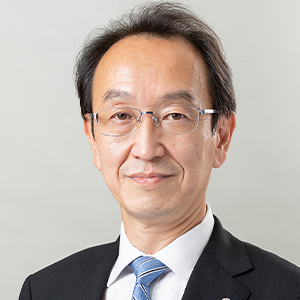 Yasushi Shimazu
Yasushi Shimazu
Operating Officer and General Manager, Hokkaido Division, NTT EAST, Inc.
NTT EAST, Inc. is promoting the collaborative creation of locally based economies. The company sees itself as a social innovation partner, utilizing assets such as telecommunication business expertise, services, and equipment acquired from its regional operations to act as an enabler, consulting with communities about their hopes and challenges and seeking ways of resolving them.
In agriculture, for example, we have established NTT AgriTechnology Corporation to familiarize ourselves with concerns and issues faced by farmers, of which we would be unaware were we merely a facilitator, and to devise practical solutions to these challenges. This has involved getting dozens of our young staff actively involved in farm work whereby they trial the use of information and communication technology (ICT) devices to improve productivity while participating in lettuce or tomato growing. We have also engaged in a variety of other activities, including the digitalization of roading records for preventive maintenance of infrastructure, the use of AI speakers in care for the elderly, and the establishment of Hokkaido Open Platform (HOP), a digital community that links relevant people from industry, government, and academia together with business people from venture companies.
Hokkaido is an area with great potential. Indeed, it is no exaggeration to say that Hokkaido supports the entire country, something that becomes evident when you consider food self-sufficiency or its scope for generating renewable energy. With factors such as international conflict driving concerns about economic security, we believe that to protect the productive capabilities of Hokkaido is to protect Japan as a whole.
In addition to nationwide issues such as aging demographics and a low birthrate, a challenge specific to Hokkaido is that its agriculture, aquiculture, forestry, and energy resources are spread across a wide land area. As a telecommunications operator, our desire is to use the power of networks to shrink distances through the sharing of resources between areas in tandem with ongoing area-by-area digital transformation (DX).
To this end, we are considering the construction of networks that use Innovative Optical and Wireless Network (IOWN) technology. We are currently partnering with international organizations to standardize this technology. It offers dramatic performance improvements over the conventional telecommunications currently in use, with a 125-fold increase in transmission capacity and 200-fold improvement in latency, enabling real-time communications with high throughput while minimizing power consumption. Having undertaken trials in partnership with relevant institutions including the Hokkaido Prefectural Government and Hokkaido University, we are now looking at a wide-area rollout of IOWN in the Hokkaido Valley*1 area. A future of regional development with remote operation of equipment and where people in the regions can receive education at the same level as if they were in Sapporo, ... this is the sort of future we want to be a part of building.
- *1
- A project being promoted by Rapidus Corporation that will turn the strip of land running from Tomakomai to Ishikari into a hub for DX and green transformation (GX) and develop it as a center for semiconductor manufacturing.
Three-way Discussion
Regional Challenges and Design
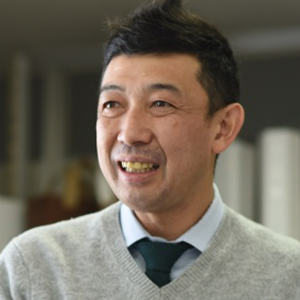 Atsuhiro Kondo
Atsuhiro Kondo
CEO, Morita Corporation
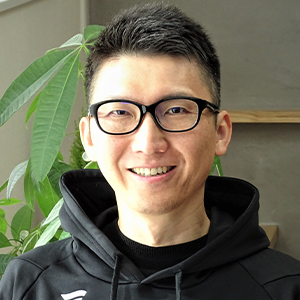 Ken Kobayashi
Ken Kobayashi
Executive, Fighters Sports & Entertainment Co., Ltd.
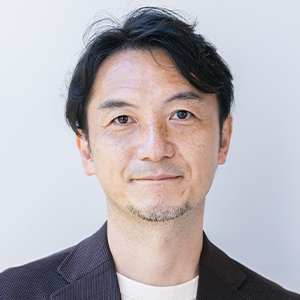 [Moderator]
[Moderator]
Yukinobu Maruyama
Head of Design, Design Center, Research & Development Group, Hitachi, Ltd.
MaruyamaHitachi has been putting an effort into design for more than seventy years, from the 1950s to the present day. Along with product design and graphics design, this has involved augmenting our designs with ideas of usability that come from ergonomics and information engineering. Over the past 20 years or so, we have also been paying attention to the design of customer value and experiences. Today, we have invited Atsuhiro Kondo and Ken Kobayashi to talk about the resolution of societal challenges and the value of design in business. Mr. Kondo works for Morita Corporation, a company with operations that include paper packaging, and is employed in a role that has design at its heart. Mr. Kobayashi, meanwhile, is from Fighters Sports & Entertainment Co., Ltd., a company involved in the Hokkaido Ballpark F Village*2 urban development project at Kitahiroshima City in Hokkaido. Could you start by telling us some of your experiences regarding how design can play a part in resolving the societal challenges facing communities?
KondoI run a small urban factory in the Shiroishi Ward of Sapporo City that produces cardboard boxes and packaging. I used to think of design as something undertaken by esoteric artists and belonging to a completely different world. Deciding that this was an outlook I needed to change, I enrolled myself in design school. By doing so, I realized that it was design itself that changes perspectives. This has left me with a sense that, by putting myself in touch with a wide variety of designers, the result has been an increase in the value added by the company.
KobayashiThe Hokkaido Ballpark catchphrase is urban development based on sport. While baseball obviously plays a central role, it occurred to me when I looked at pre-construction design drawings for Hokkaido Ballpark that the project is one that will appeal to more than just baseball fans. One feature of the area is that it contains a mix of both every-day and non-every-day functions, including condominiums and facilities for glamping, childcare with on-site day-care, and agricultural training. Kitahiroshima City is a place rich in nature that is located midway between Sapporo and New Chitose Airport and offers easy access to both. Early on, however, I was struck by the difference in perception between locals and outsiders, with a lot of local people asking us why we were building Hokkaido Ballpark in a place they thought of as a mere waystation to somewhere else. Since we have opened, however, we have been getting more than four million visitors annually made up of both tourists and locals.
MaruyamaI expect that a sense of initiative, leadership, and captaincy are needed when trying to put design to work in the resolution of societal challenges. What are your thoughts on this?
KondoFor a small urban factory to survive, it is important that it clearly differentiate itself and generate a high level of added value. This is what led us to start making our V-cut cardboard boxes. This involves making cardboard boxes using a technique typically used for wooden boxes. The finished products convey a strong sense of quality. We then went on to hold the HAKOMART event involving communication with designers I came to know through design school. This had the designers dreaming up their own box designs which we then made for real and presented at an exhibition, gaining a lot of publicity for us in the process. However, the best outcome of the event, I believe, has been the improvements it brought in product quality by inspiring a desire among factory staff to come up with more creative products. These were staff who had previously been content to make the products they had been told to make. We have also chosen Milkraft*3 as the brand mark for our V-cut cardboard boxes to make customers aware that they are manufactured from recycled milk carton paper.
KobayashiHokkaido Ballpark has a lot of facilities and events for children. Children in Hokkaido are somewhat conservative by nature, a consequence of the conservatism of their parents. Something I have noticed when out and about is an atmosphere in which adults stifle children, where children wanting to do something are held back by their parents. That is why, when I returned to Hokkaido, I wanted to get across the idea of what might be possible if adults got fully engaged. Also to put this idea to others and create value through collaboration with other industries. One example is Kubota Agri Front, an agriculture training facility established through a three-way partnership between Hokkaido University, Kubota Corporation, and Hokkaido’s Nippon-Ham Fighters baseball team, and how it became a flagship project at Hokkaido Ballpark.
MaruyamaFinally, could you tell me what you yourself think of as “new value”?
KondoEzomatsu-Craft*3 is a product developed by Morita. This is a Hokkaido paper made by taking wood offcuts from sawmills and converting them into sawdust that is then coated on paper. By expressing the essence of Hokkaido in packaging, it combines our own growth with contribution to the community. The high regard in which Ezomatsu-Craft paper is held has led to our receiving high-end work from around the country. Our next target is overseas. In fact, we already have an order for wine boxes from California in the USA and this January we exhibited at a trade show in France. Given the size of our company, this is something on which we are staking our future and I am looking forward to bringing work from around the world to Sapporo though high-end products. In time, I also want to make us into an open factory that can welcome the world’s creators.
KobayashiHokkaido Ballpark is still only three to four tenths along the way to completion. Out of a desire to move forward in partnership with the local people, we are pursuing initiatives for transforming the town by coming up with ideas for making it more attractive, painting pictures, and turning these into a single emblem. Having the university relocate here in 2028, building high-rise condominiums, increasing visitor numbers from four to seven million annually, ... these are the sort of plans we have in mind.
MaruyamaDesign, or to put it another way, leadership, initiative, and creativity, are essential to resolving challenges in societies beset by uncertainty. They foster empathy with the people around us, creating a world that transcends our preconceptions and giving rise to new markets. I believe you have helped to show us how this can be accomplished. Thank you for your time today.
- *2
- Hokkaido Ballpark F Village is a registered trademark of Fighters Sports & Entertainment Co., Ltd.
- *3
- Milkraft and Ezomatsu-Craft are registered trademarks of Morita Corporation.
Panel Discussion
Regional Revitalization and Captaincy
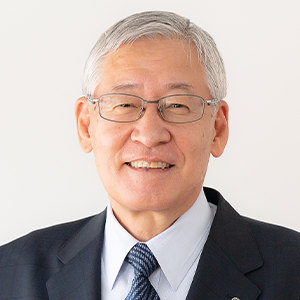 Kenya Katayama
Kenya Katayama
Mayor of Niseko
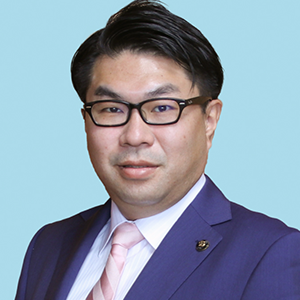 Hisashi Sakurai
Hisashi Sakurai
Mayor of Bibai City
 Akiko Tamakoshi
Akiko Tamakoshi
Professor, Graduate School of Medicine, Hokkaido University
 Takayuki Hashimoto
Takayuki Hashimoto
Laboratory Manager, Hitachi Hokkaido University Laboratory, Research & Development Group, Hitachi, Ltd.
[Moderator]
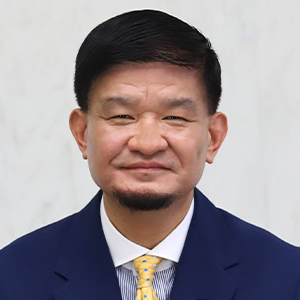 Tsuyoshi Setoguchi
Tsuyoshi Setoguchi
Executive Vice President, Hokkaido University
SetoguchiAwareness of the problems posed by the decreasing population in Hokkaido are becoming evident in a variety of contexts. When I asked a generative AI, “What are the positive aspects of a decreasing population?” it came back with four answers: “A better quality of life,” “better working conditions,” “sustainable societies,” and “comprehensive education and welfare.” The point, it seems to me, is that, whether you see a shrinking population as a positive or as a negative, you shouldn’t need to worry about whether the population is increasing or decreasing, provided you have a vision for the future. As such, I would like us to have a positive debate on this topic today. I would like to begin by asking the mayors of Niseko and Bibai City, Kenya Katayama and Hisashi Sakurai, to give us a brief introduction to their towns.
KatayamaOriginally a town of 9,000 people, the population of Niseko has since shrunk to just 4,400. When we talked about what sort of town we wanted Niseko to be, given our circumstances, we embarked on a variety of initiatives based on a vision of being a town that people from anywhere in the world could come to and have their human rights and dignity respected without experiencing discrimination, and also an eco-model city that combines tourism and agriculture by pursuing rigorous measures for decarbonization. We are now seeking to become a city where children's futures are co-created, one in which the resident children can be motivated and feel proud.
SakuraiBibai City is a coal mining town located midway between Sapporo and Asahikawa. Having had a population of more than 90,000 during its heyday, we are now down to only about 18,000 people. It saddens me that, when asked about their home town, many residents of Bibai still describe it as a “a town with nothing to offer.” To change this attitude, I believe it is vital that we make the town residents aware of what is great about Bibai and communicate this to people elsewhere. To this end, we have embarked upon a number of initiatives for fostering civic pride.
SetoguchiThere has been much talk in today’s discussions about the importance of vision when building a community or an organization. What are the visions of Niseko and Bibai City?
KatayamaWe debated what we as a small town should be doing to survive and the conclusion we came to was “resident self-determination.” With the aim of getting away from a dependence on government and instead having residents decide and act on their own behalf as sovereign entities, we established our core ordinances for Niseko town planning, the first such local government ordinances in Japan. When farmland and assets in Niseko owned by the writer Takeo Arishima were handed over to the tenants in 1922, it gave us the term “sogofujyo” (mutual aid). I see this as a philosophy for how to create a society in which people talk to and help one another in an atmosphere of mutual respect. As such, it represents the core policy on which our town operates.
SakuraiThe way I express our vision for Bibai City is as “a place where everyone speaks of a flourishing future.” The local residents see town planning as an issue with personal relevance and we want to become a place where the development of the town is driven by the richness and hope that exists in everyday life. It is two years since I became mayor. While it is hard to convey, my goal is for the residents to take pride in their town while acting to help themselves and one another.
SetoguchiProfessor Tamakoshi, you have been studying how towns can be made to flourish against a backdrop of shrinking populations. Do you have a vision or other community goals for such a society?
TamakoshiListening to what was said earlier, I found myself thinking it would be a good thing for there to be more towns like Niseko and Bibai. When you look at the social reality, however, I am conscious of how children are divided and compelled to compete with one another. For example, some things are lost sight of when you live in a highly uniform society categorized by things like school year or parental income and occupation. I feel that mutual acknowledgement of diversity is essential if we are to create a society in which young people trust and help one another.
SetoguchiSomething Takeshi Okada also touched on in his keynote address is that aspects of “freedom” and “separation” overlap. Difficulties arise when you try to follow a fixed path while also retaining your freedom. What are your thoughts regarding this?
KatayamaGiven that everyone has their own values and ways of thinking, healthy societies, it seems to me, are built up through dialogue and by accumulating solutions where there are no right answers. The questions, “Does this serve the public good?” “Are the procedures fair?” and “Can this withstand public disclosure?” are known as the three principles of public administration. By being clear about these three points, you will bring a variety of issues to light.
SakuraiBibai City started out as a coal mining town, dependent on the coal industry for everything that made the town what it was. Now that the coal era is coming to an end, we are in need of a new vision. With the town having its lost vitality, however, it is crucial that we strengthen ways in which we can help ourselves and one another. The truth is that residents have had little opportunity in the past to participate in town planning. That is why we want city administrators to make information available and increase the number of residents who contribute their views about how the town should develop.
SetoguchiWhereas regional management by local government was in the past split between the two poles of city authorities and residents, other stakeholders are now also getting involved, not the least of which are businesses. Do you have an ideal or similar for how private-sector companies can best involve themselves in regional management? If so, please tell us about it.
HashimotoWhereas companies in the past have tended to restrict their activities to their own sectors, energy in the case of energy companies or public transportation in the case of public transportation operators, an economically rational approach is essential not only for testing out technologies, but also for putting down roots in the community. When you do so, it is also necessary when embarking upon cross-sector initiatives to consider the entire package, encompassing not just the technology, but also institutional design. While this is a complex task for companies, it is something that cannot be avoided if you want to move forward.
KatayamaWhereas the contracting of public works in Japan operates on a specification-based tendering process, where going with the cheaper option is considered best however small the difference, the practice in most of the rest of the world is to award contracts based on performance. Given that we now have a legal framework that allows for collaboration and that the Board of Audit permits the specification-based awarding of contracts, I believe we need the ability to operate in a transparent environment in which we can clearly state the reasons why we chose a particular option.
SakuraiWanting to get DX underway in earnest, we set up a committee on the topic at the Bibai City administration. Building on this, we have incorporated the Govtech Bibai private company consultative body as a general incorporated association and are working in partnership on DX initiatives inside and outside the city administration. As we also face numerous issues with infrastructure, we have got university academics involved and are working together to investigate solutions.
TamakoshiI believe that having a place where we can consider all sorts of possibilities and try them in practice is very valuable for the university. When it comes to whether university academics receive recognition for their role in resolving regional challenges, however, there are few such mechanisms in place. If that were to become another professional assessment criterion, I expect there would be a lot of people wanting to get more deeply involved in work on regional challenges.
SetoguchiCaptaincy has been one of the key words in today’s discussions. Could you please tell me about your views on how to provide leadership to your municipality’s staff and residents and get them involved in their communities, or on captaincy in a corporate context.
KatayamaIn a small town such as mine, we need to get all staff and residents involved in thinking things through and then acting. To this end, we cannot let ourselves be the parochial “frog in a well” and so we are creating opportunities for engagement with others, including overseas study trips. I see the role of captaincy as being to serve as a facilitator for people to express their personality.
SakuraiWhat is most important for local government, I believe, is for all staff to be highly motivated and to have a vision for what they want the town to become. In this regard, my idea of captaincy in management is about putting things in place to get everyone working toward the same goal while also steering a course based on current circumstances.
HashimotoWhile it is difficult for private companies to exhibit captaincy in a community when it comes to the challenges that community faces, I am reminded once again of the importance of connections with people if a company such as ourselves is to act as a technology partner to local leaders and to staff and residents.
SetoguchiGiven the changing nature of organizations, it may be that universities or private-sector companies will become deeply involved in future regional management. Could you please share your visions for what communities will look like in the future and how they are changing?
KatayamaHow to make the most of regional capabilities and the self-determination of residents will be important factors in the future. To this end, we will need to loosen up the structures of administrative authorities and adapt them to governmental functions. While tourism, for example, has traditionally been singled out as an industry on its own, once it becomes subject to regulatory governance, democracy that is meant to provide equality of opportunity ends up being asked to deliver equality of outcome. This represents the limits of governance, and I suspect that in this area it will be necessary for a wide variety of sectors to participate in administering municipalities and for the residents to get involved in the process.
SakuraiBibai City has also set up an agency for dealing with local tourism development called a destination marketing organization (DMO), also known as a destination management organization. I believe that we need to output as much as possible of those things that can be output and return administrative capabilities to the local people. Given the harmful effects that come from having such functions within the city administration in the phase where we are pursuing our collective survival (involving neighboring municipalities along with Bibai City), establishing organizations that can operate across multiple local government jurisdictions and delegating the work to them seems to me to be the inevitable way forward.
SetoguchiWe live at a time when local governments that in the past have operated on the basis of government subsidies and grants now need to stand on their own two feet. Can you give me any examples of business operations that are intended for regional management?
KatayamaMy thinking is that those things that can be done collectively should be done collectively and I would like us to be the sort of society where, if residents express a desire to do something, we should give them a helping hand. I believe it is important to move away from a dependence on leaders and instead become a society in which everyone can act for themselves. One example might be to establish ways for people to advance themselves by studying locally, such as setting up a program to help people go to university or graduate school in cases where they are working because they lack the means to do so on their own.
SakuraiWhile the economic policies of local government support the growth of companies located in their towns, I also think this should be a way to foster civic pride. One example is how for many years we have worked in partnership with various interested parties, primarily university academics, to investigate how we can make use of all the snow that creates such a nuisance in winter. About 15 years ago we came up with the idea of a “white data center” where the snow is used for cooling and in 2021 a commercial venture was setup to pursue this. The project is being undertaken on a team basis with different roles for the different parties involved. This includes the town being responsible for finding funding to trial the idea.
SetoguchiI think the communities of the future will be managed as businesses rather than self-governed. I hope that in the future we can continue to discuss with one another about the role that universities and companies can play in this. Thank you for your time today.
Closing Address
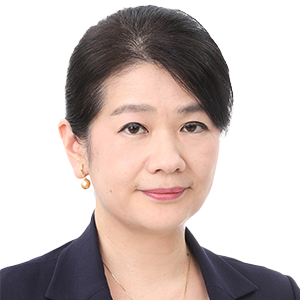 Asako Koike
Asako Koike
General Manager, Technology Strategy Office, Research & Development Group, Hitachi, Ltd.
The closing address was given by Asako Koike, General Manager of the Technology Strategy Office at the Research & Development Group of Hitachi, Ltd. After recounting the day’s program and expressing thanks to the presenters and audience, she also made the following comments about the work of the Hitachi Hokkaido University Laboratory and the prospects for the future.
“I have learned much from today’s forum through discussions that have brought the perspectives of academia, business, and local government into alignment. Amid accelerating changes in society itself, such as the loss of momentum by GX and DEI, our conception of what constitutes a problem is also evolving. Despite this, it is important that we adopt a wide variety of approaches to the resolution of societal challenges, including becoming personally invested in the issues, helping both ourselves and one another, and technology and design. I also believe that education will become vitally important as a foundation of captaincy and human capabilities. In the future, I hope we can continue to take on even greater societal challenges through collaboration between companies and local government as well as universities in their role as educational institutions.”

